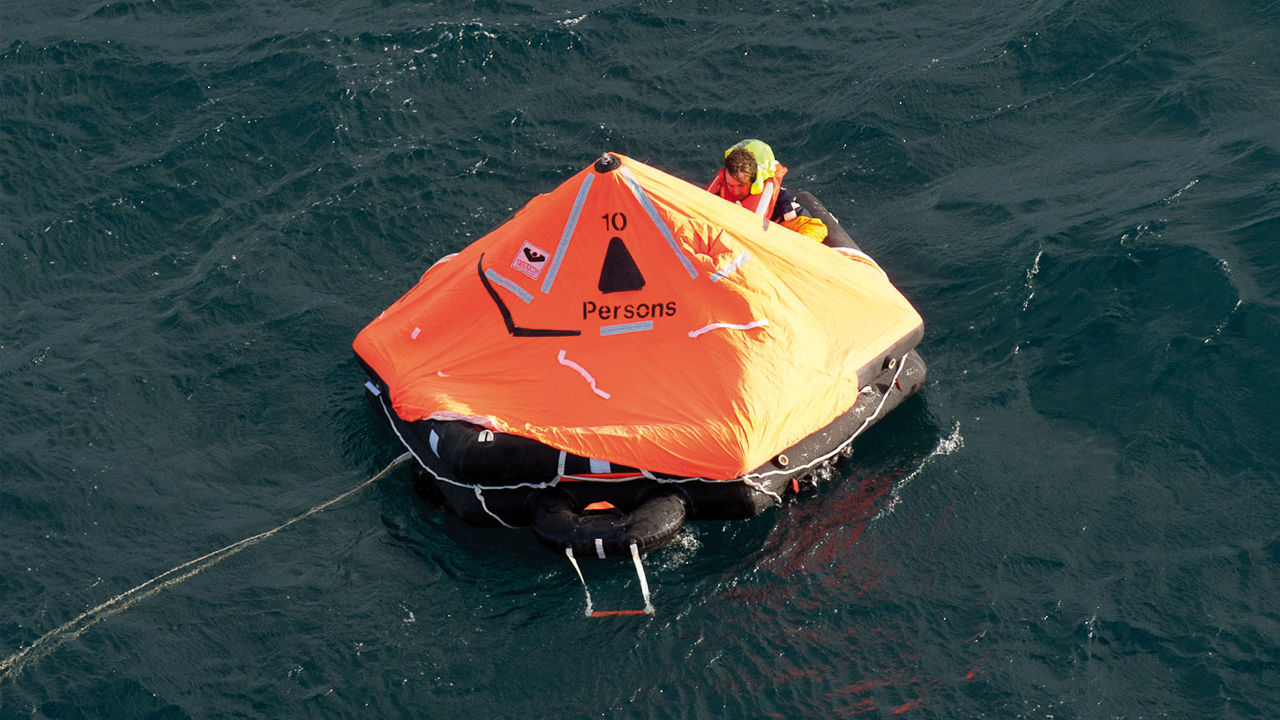
Issue #: 161
Published: September / October 2018
- Price per issue - digital : 6.20€Digital magazine
- Price per issue - print : 8.50€Print magazine
- Access to Multihulls World digital archives Digital archives
It’s the final bastion of our safety aboard, or rather overboard. How do you choose the right liferaft from among the different models, and above all, where do you put it so you can realistically handle it in an emergency situation?
We don’t wish it on anyone to have to get into one, one day. But if it happens, the choice of model and the way the liferaft is fitted aboard are of prime importance, so you can successfully launch and activate it. It always happens in a case of extreme emergency. Water is coming aboard and the boat – if it isn’t unsinkable – is threatening to sink. You generally have a few minutes, rarely more, to carry out the operation. Or perhaps fire is raging aboard, and here things happen even faster. The toxic fumes will urge you to leave the boat in less than two minutes. And of course this most often happens in bad weather. The boat’s deck moves and can be slippery. The stress mixed in with this is not the best of allies. And what if in addition there are injured people aboard… Needless to say, numerous obstacles can seriously impede the success of your embarkation into your liferaft. And once sheltered aboard the liferaft, the time you have to wait to be rescued can be more or less long, depending on the accident zone. In certain cases, on the open sea, you can wait for several days…

We find two major categories of liferaft: type II called 'coastal', compulsory in France over 6 miles from shelter, but strongly recommended if you go further than 2 miles from the coast. The type I liferaft, called ‘offshore’ is for sailing more than 60 miles from the coast. This second category is sub-divided into two classes, A and B. The difference concerns the resistance and the usable temperature range, which is from -15° to + 65°C for the A and from 0° to + 65° for the B. Finally, still in class I, there are liferafts equipped for 'less than 24h' or 'over 24h' (see what is compulsory in France in the box). We can’t advise you strongly enough to complete the contents of the liferaft with equipment placed in a waterproof bag, called the ‘Grab Bag’… In France, since 2008, the regulation size of the liferaft depends on the number of people embarked, and not the number of passengers for which the boat is approved. If you never sail with more than 6 crew members aboard, there is no point in having a 10-man which will be more limiting and hard to handle. Finally, you will have to choose between a liferaft in a valise and one in a protective canister. The first type fit easily in a locker, as they are more flexible. The second kind are better protected from the elements and are fitted outside. They are also easier to use…
We all know it: the conditions in which we risk having to launch the liferaft, activate it and climb aboard are more often than not, tricky. Where on the boat you choose to install it is therefore very important for succeeding in your ...
What readers think
Post a comment
No comments to show.